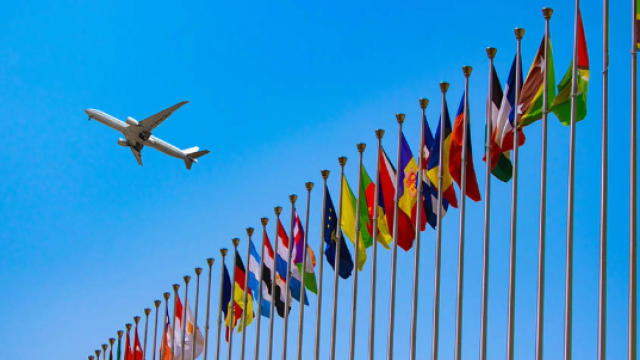
Airfares lose altitude as passenger load factors remain strong
29 May 2025 - Newly released data from FCM Consulting has revealed that January-February 2025 saw a year-on-year reduction in Australia’s average domestic economy airfares of 12 per cent ($29). International economy and business class fares also dropped by five per cent ($51) and three per cent ($175) respectively*.
The savings on Australian flights at the beginning of 2025, compared to the same period in the previous year soared above the drop in the cost of average airfares worldwide. Global average airfares saw a three per cent decrease in economy class and a four per cent decline in business class, compared to 2024.
FCM Consulting Director APAC Felicity Burke said Australia and the broader APAC region had experienced some of the sharpest drops in fares in early 2025, compared to the rest of the world, with local travellers benefiting the most.
“The biggest drops across major city pairs were led by the Melbourne to Perth route, followed by Adelaide to Sydney, while Brisbane to Sydney and Melbourne to Sydney remained fairly flat,” Ms Burke said.
“The golden triangle route, between Sydney, Melbourne and Brisbane, is in the greatest demand, and has the tightest load factors, so it stands to reason that these destinations are seeing the least amount of movement in fares.”
IATA figures** also showed that global passenger load factors for Q1-2025 were at 81.3 per cent, up 0.3 per cent compared to Q1-2024. Load factors softened in all regions in March 2025, apart from APAC, which sat at 84.4 per cent, and was up 1.7 per cent between Q1 2024 and Q1 2025. A high load factor indicates that an airline has full planes with most of the seats booked, so it is generally a clear indicator of demand for a specific route or region.
“The travel industry has entered an intriguing new phase – with an extra 235 million seats available globally in 2025 versus 2024,” Burke said.
“We’ve been saying for a long time now that global capacity increases and other factors like jet barrel cost reductions would go hand-in-hand with airfare price drops in various regions, and this is one of several reasons that we’re now seeing this come to fruition.
“Global capacity in May 2025 currently sits at an average of 107 per cent versus 2019 and up five per cent on the same month last year. Diversity of choice fuels competition between the airlines, with customers ending up as the ultimate winners with lower fares.”
FCM Consulting also revealed that for the full year 2025, more than 170 new major hotels were due to launch globally.
“This signals the long-term resilience of travel across corporate and leisure markets. Competition is strong across the major chains, with product diversity and choice all focused on growing loyalty. Guest loyalty programs are offering considerable traveller benefits,” she said.
“Across Europe and Asia, consistent seasonality was observed through 2023 and 2024. This is due to traveller demand remaining strong across leisure and corporate travellers. All other regions experienced year-on-year corporate average room rate volatility, indicating seasonality demand trends were not yet stable and fixed negotiated rates were key to stabilising travel budgets.”
This FCM Consulting quarterly trend report draws on global data sourced from FCM Travel and Flight Centre Travel Group corporate booking data for travel from January to March 2025 (Q1-2025). The report uses Cirium aviation schedule data as of 7 May 2025. Airfare pricing variations exclude all taxes.
The hotel average room rate (ARR) quoted is the average booked rate using FCM Travel and Flight Centre Travel Group corporate booking data. Variations in rates booked are a reflection of seasonality, supply and demand, booking lead times and variations in exchange rates. Unless otherwise stated, all fares and rates are reported in US dollars.
*Based on USD to AUD conversion rates as at 7 May 2025.
*IATA Passenger Load Factors as reported on 30 April 2025.


